As the city of Los Angeles celebrates The Rams’ return with a new stadium taking billions of dollars to build, the new demographic plans on gutting out the little identity left within the Inglewood scene. The mainly middle-class neighborhood always had a weird racial stigma that were similar to realities of the late 80s/early 90s Compton and Los Angeles when I grew up dealing with the exact opposite. Spending a majority of my childhood in Inglewood Family territory, there was never a moment where my life felt at constant threat. That doesn’t mean the at period lacked moments of danger. A homie of mine got shot nine times. Ironically, it happened around the time Get Rich Or Die Tryin’ came out. Things just never felt that bad. The same went for more notorious areas like “The Bottoms” or anywhere off the south side of Beach Blvd. Similar to last year’s cult classic Dope, Inglewood always just sat in the middle between ratchetness and upward mobility. It was the middle-class black heaven and the music from there reflected it. Obviously, that ethnic aesthetic was built from white flight around the early 70s.
Growing up in Inglewood meant recreational activities within the city limits were little to none once The Lakers and The Kings left for the Staples Center. Before the turn of the millennium, The Great Western Forum was the city’s only pure entertainment destination. Everyone from Eminem and Dr. Dre headlining the Up In Smoke Tour to MC Hammer all graced the historic circular venue cornering Prairie Ave and Manchester Blvd. Less than a mile east, the once legendary venue, The Academy, sat wasting away despite being home for various church services. Ask most Inglewood citizens, and they probably wouldn’t even know The Oscars were once held there. Most adolescents raised in The City of Champions have an understanding that most weekend or out-of-school break pastimes including sports events, going to movie theaters, thuggin’, looking for fierce Marvel vs. Capcom competition and watching their favorite artists perform took place in outside areas besides the general kickback.
This reflects how bare Inglewood’s Hip Hop scene once was. Sure, the city is close to downtown, blends into Los Angeles and less than ten miles west ends at the beach. But Hip Hop has always been territorial. Look at the culture’s early history in New York. Brooklyn, Harlem, Queens, the Bronx and Staten Island all had various emcees representing. Of course, the mid to late 90s extended that notion to the infamous East Coast vs. West Coast rivalry. For the Southern California suburb, Inglewood always placed last compared to Compton, Los Angeles and even Long Beach before Mack 10 served as the city’s only glimmer of light. Anyone remember the scene featuring Dedrick Rolison jumping off The Forum roof in the “Foe Life” video? Following the decline of Westside Connection and a fairly inconsistent solo career, it would take almost a decade for others to even make a small dent in their neighbor’s market share. That’s a shame considering how much the city is connected to some of the biggest acts in West Coast Hip Hop history.
Before Kendrick Lamar became the rap God he grew to become, his introduction to Dr. Dre came at the hands of J. Cole watching him perform at a release party for U-N-I, one of the first groups to indulge in West Coast “swag raps.” The Inglewood duo initially kicked off a new movement in blog-worthy alternative Hip Hop in Los Angeles. Eventually, the group featuring Thurzday and Y-O broke up. Since then, Thurz has managed to carve a very specific lane for himself. He even released his last project through Red Bull. Plus, his local “Party In My Living Room” and New Year’s Eve parties with 2DopeBoyz have become yearly anticipations themselves. “I guess I would consider myself an architect continuing to build on the foundation with expanding the musical soundscape of the scene as well contributing to the culture with unique event curation involving the city,” says Thurz. Years later, Cali Swag District would go triple platinum with “Teach Me How To Dougie,” though the deaths of members M-Bone and JayAve halted their progress indefinitely despite being signed to Capitol Records.
Somewhere in between, contemporary gangsta rap feel of Skeme and extremely chill stylings from Casey Veggies began to form movements in their own right. Fast forward today and the two have earned considerable accomplishments. Skeme became known for ghostwriting for Iggy Azalea, including possibly helping to pen her biggest hit to date “Fancy.” His successful Ingleworld series surely helped as well. Last year’s release of Ingleworld 2 and Ingleworld 3 helped make him DX’s Most Underrated Emcee of 2015. Meanwhile, Veggies released his major label debut Live & Grow through Live Nation and Sylvia Rhone’s Vested In Culture imprint of Epic Records. Woodworks Studios helped give the city various open mic nights and had family ties to Tiffany Gouche before closing last year. Gouche represents the newer crop of female producers/songwriters whose earned major placements with Little Simz. Doesn’t hurt that she’s finding herself to be a future leader in the emerging future-soul genre. Going from producing with D.R.U.G.S. to last year’s fantastic Pillow Talk EP is inspiring. Even the experimental R&B and Rap hybrid Sir has garnered attention. However, Inglewood’s scene has yet to make even a significant dent in their neighbor’s market share. The reasons exactly why Inglewood hasn’t churned notable artists at a higher rates could be numerous.
HipHopDX Media Coordinator Sparkle Pratt has been putting on for Inglewood and surrounding areas alongside Chuck Dizzle and DJ Hed through Home Grown Radio. Off and on for the network’s over six-year history, their offices sat in Inglewood’s downtown Market Street area for five years collectively. Though Home Grown Radio evolved into their own full terrestrial show on The Real 92.3 FM, they’ve always managed to support up-and-coming artists. Kendrick Lamar, YG, Casey Veggies and a host of major West Coast emcees spent time there. According to Pratt, The Rams moving to Inglewood will change the perception of the area. “I can see Inglewood literally becoming the place for The Rams,” says Pratt. “Rappers more in line with the gangta rap might not even mention they’re from there.” Home Grown is already feeling the pressure of higher rent. “It’s been creeping up but it’ll eventually skyrocket,” says Dizzle. Pratt even mentioned moving to a more central location due to cost and closeness to Hollywood and Burbank. Even with the possible changes, it was assured Home Grown would remain friendly to starting artists. “However, it’ll still be a place for rappers from the area to come by for support,” she assures. For now, residents of the area with a love of Hip Hop know both history and the future according to Dizzle. “For most fans, old school cats look at Mack 10 but newer artists are Skeme and Casey Veggies so I believe the city will be fine,” Dizzle says.
Faithful Central bought The Great Western Forum in a church expansion once LA’s sports teams moved to Downtown LA before selling it to The Madison Square Garden Company several years later. This was the first stage, as attaining a football team and an accompanying stadium serves as the next step. Property values have already begun to soar. Add construction of a new Metro train line and there’s possibility of a larger cultural shift. Like acclaimed author Erin Kaplan says in her Los Angeles Times op-ed Can Inglewood Survive the NFL and Gentrification, “Having The Lakers and occupy The Forum had zero effect on the community as the same white flight mentioned above and financial divestment made enough damage.” According to some reports, billions of dollars in yearly revenue has been estimated along with the creation of 40,000 jobs. Thurz even feels as if there’s a chance Inglewood’s music culture. “The Lakers played in Inglewood and now we’re getting the Rams, so that’s a testament to what Inglewood is known as, the City of Champions. I think it will shed more light on the musical scene being that we have the most diverse high-level music scene,” Thurz says.
That could affect its Hip Hop scene, especially once blacks and latinos move away once rent gets high enough. This is something that worries Thurz as well. “The only con is the problem with gentrification,” says Thurz. “I wouldn’t want that to steal the soul of the city.” Matter of fact, businesses have already started to close as leasing prices have skyrocketed as well. Maybe this is what fights the city once had over an LAX expansion and turning away Walmart were truly about. Last year, The Boombox wrote an interesting editorial titled “The Gentrification Effect: Is the Heart of New York City Rap Being Priced Out?” which asked similar questions. Though the rise of Southern Hip Hop has been blamed for New York’s demise, changing demographics could have potentially stunted most youth movements, which typically lack the capital that a rapidly gentrifying landscape demands. What does the future hold for Inglewood’s rap scene? It’s unclear at the moment. However, it would be a shame to see such slow, gradual momentum vanish entirely.

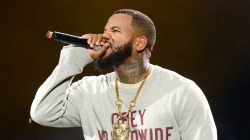
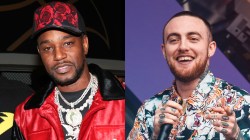
![Method Man Admits He Didn't Like Drake's "Wu-Tang Forever": "I [Wasn't] Getting On That"](https://hiphopdx.com/wp-content/uploads/2025/12/method-man-drake-wu-tang-forever-remix.jpg?w=250)
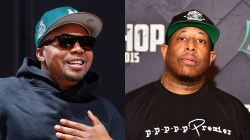

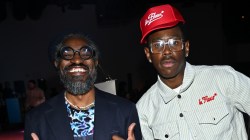

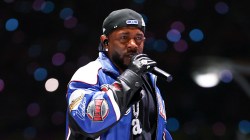
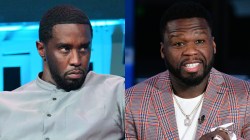
Casey Veggies fell off hard.